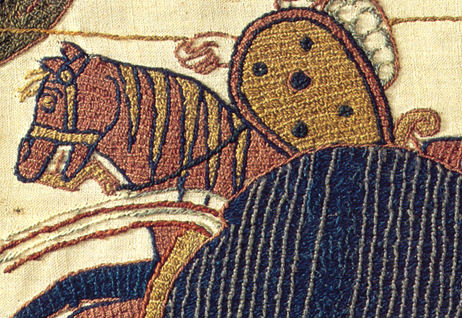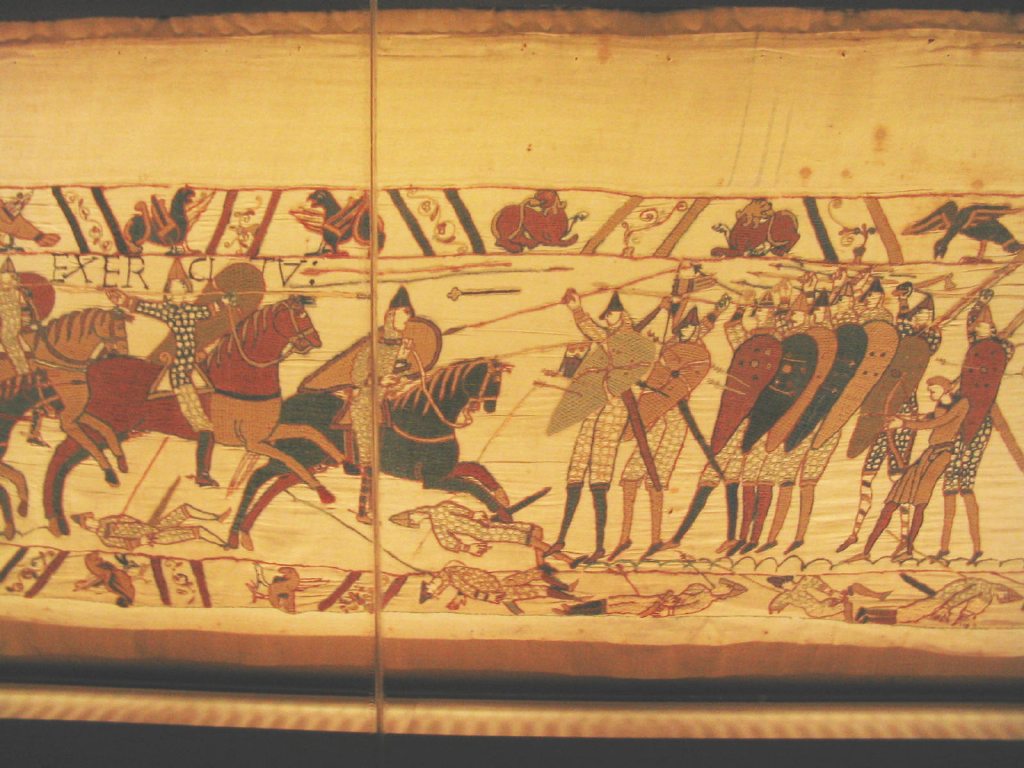Medraut shivered as he and Arthur strode towards the king’s work room. There was a draft in the Great Hall. They had opened the doors to bring in the Yule log.That got me thinking about the Yule log tradition. My Camelot is still set in an alternative 12th century, although, yes, as you know, I am playing with changing it to the 6th. I wondered how the Yule log would play out in each of those scenarios.
“I want you to take charge of the execution,” Arthur said as they paused to let pass a group of giggling pages carrying garlands of holly. Absently he mussed the hair of the smallest lad, who looked up at the High King with adoration in his eyes.
Arthur had never mussed his hair like that. For a second, jealousy overshadowed the task to which Medraut had been set. Then he realized what his father had just commanded. “Sire?”
Arthur’s eyes swept the hall, taking in the Christmas preparations, his brow raised in surprise. Shrugging, he hurried on past the dais where maids spread fresh, white linens across the board. “It’s to be in two days. I want the wood good and green. Plenty of smoke. Less painful that way.”
Most web sites claim that the Yule log is a very old tradition, going back to the pre-Roman Germanic peoples of northern Europe, or to the Celts. Other sources say it may have been Egyptian in origin, or part of the incorporation of the Persian sun-god Mithras into the Roman saturnalia. (Mithrasism spread into Britain with the Roman invasion in 54BC.)
On the other hand, other web sites say that this is all speculation, that the Yule log did not appear in Britain until the 17th century, when first mention of it was recorded by a British clergyman.
Well, the first mention of the Yule log was not the 1620s or 30’s. As early as 336 AD Pope Julius I, when he declared that Christmas should replace Saturnalia as a festival, stated that the burning of the log would symbolize the light of Christ. As the a fire, light the first night of the Saturnalia, was a Roman custom, it would, of course, have made its way into Roman Britian.
In addition, it appears that the Normans, pre-conquest, burned a log at Christmas, a custom they continued from their ancestors, the “Northmen” who invaded what is today Normandy.
Not matter what its source, the yule log as a tradition, appears to have been established in Britian by the 12th century. An English poem dated 1182 refers to it. The same custom appears in other parts of Europe. In 1184, a German parish priest recorded bringing in a tree to kindle the Christmas festival fire. By 1340 Queen’s College, Oxford, included a yule log in its festivities. The celebration included a song and readings.
So how did the log work?
Over that there seems to be quite a bit of debate. Some people say it would have had to be big enough to burn over the full twelve days of Christmas. Interestingly, I could find no historical reference to the twelve days of Christmas being celebrated in the Middle Ages, though certainly by Shakespeare’s time it was an established fact. In fact, in the Middle Ages, the last day of the period, the Epiphany appears to be more associated with religious practices than misrule – and twelve days of celebration do not seem to be a recorded fact. Gift-giving, by the way, happened on the Epiphany, not Christmas, which makes sense as that was the day the wise men were supposed to have arrived with gifts for the Christ child.
A log big enough to burn over 12 days would have had to be huge, indeed. And the big question is, in practical terms, would it have burned down the hall? Some references I’ve seen say that the big end was poked into the fireplace and it was slowly “fed” to the fire in time. Well, if the wood was dry or pitchy, what’s to stop the fire from creeping along the bark, out into the hall? Fireplaces with chimneys themselves (as opposed to an open hearth in the centre of the floor) did not appear until the 12th century. Another reference says the log was cut into sections and fed into the fire a section a day. This makes more sense.
So what if you had the old kind of hearth, where the fire is made in the centre of the hall and the smoke drifts up through hole(s) in the roof? If a big log got burning, it would create an uncomfortably hot room. In fact, the heat from a big fire like that would possible drive people from the hall. But if you tried to slow the burn by possibly using a green log or throwing water on the log, you would create so much smoke, you’d drive everyone from the hall.
If you live in a 6th or 7th century Saxon-style hall, you’ve still got the danger from fire. These halls were built from wood, with an A-shaped roof. There were one or more raised, earthen banks along the centre line where the fires burned. But these structures also contained a dug-out cellar below the main floor (this is where Sioneh and Medraut are imprisoned in The Deadly Peace) – and the flooring above was wood. Unless managed carefully, a Yule log rolling off the hearth could burn down the whole hall.
I think we can safely guess that the log would have had to fit in the hearth (whether the chimney type or the open fire). And that it would have had to be chosen carefully so that it provided a good blaze without burning down the place or creating so much smoke everyone was miserable. It would probably have been a hardwood, cut earlier in the year and seasoned so it would burn without producing too much smoke.
The perfect wood for this, by the way, is oak. Oak burns very slowly and without much smoke. In fact, a couple of oak doors saved my life many years ago when the oil furnace in the hundred-year-old house I was living in caught fire. There just happened to be a couple of old oak doors propped near the furnace and they contained the blaze. The oily smoke pouring from the cellar alarmed a passer-by, who got everyone out of the house.
Anyway, getting back to the Yule log, considering the careful planning it would have taken, its procurement was probably the job of one man – possibly the manor’s forester. He would have had the necessary skill and experience to judge the correct tree and when to cut it.
But I wonder how many halls burnt down at Christmas time?























